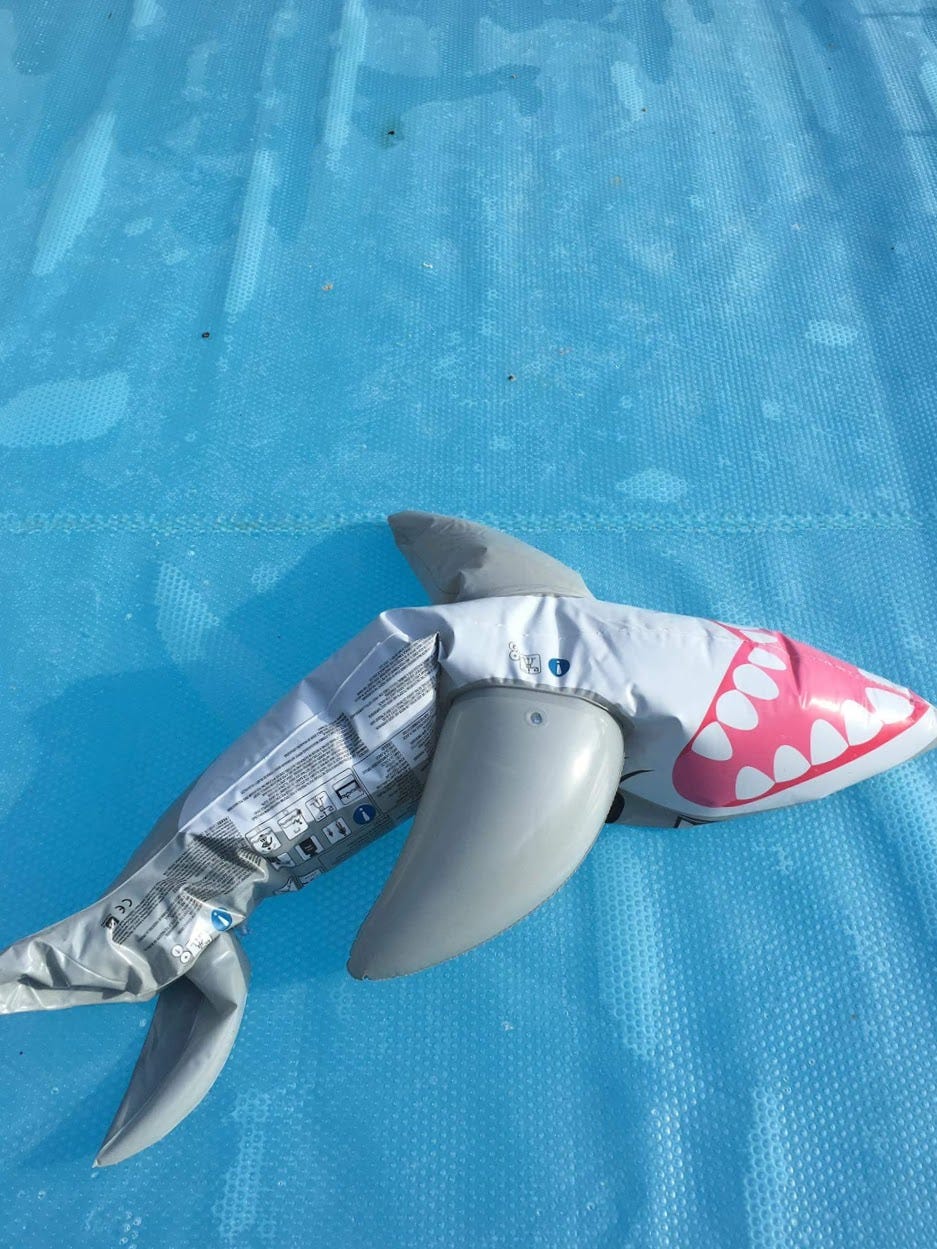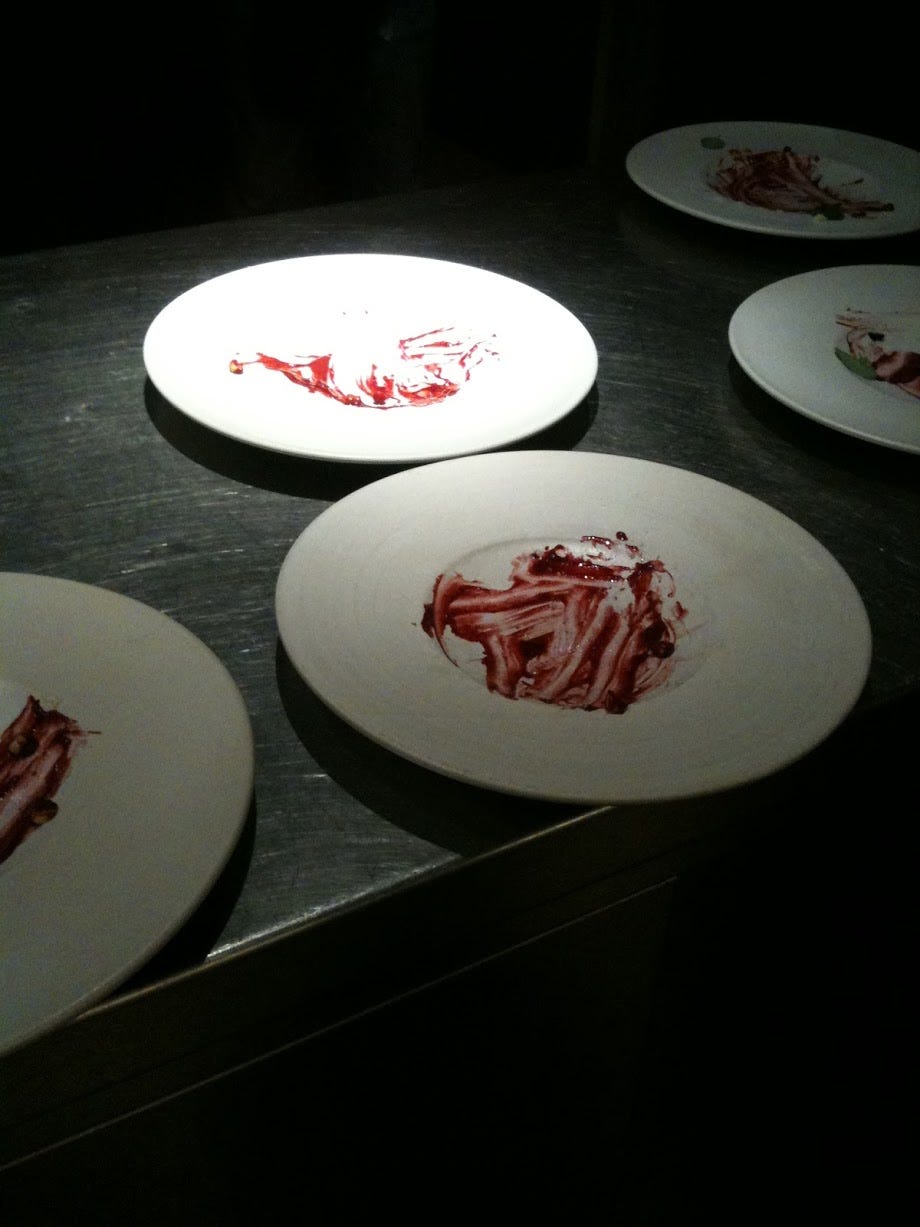#52: A year and change
A report on an experiment in self-therapy.
I’m Vaughn Tan; this is another of my weekly attempts to make sense of the state of not-knowing. The first issue explains what the newsletter is about; you can see all the issues here.
My first book, The Uncertainty Mindset, is a behind-the-scenes look at cutting-edge high-end cuisine … and what it can teach us about designing organizations to be more adaptable and innovative. You can get it here. If you like it, help me out by leaving a review somewhere. Book events are coming soon—tell me what you’d like to see and sign up for notifications here.
tl; dr: Writing a weekly newsletter was hard at first, then got easier—and made me more comfortable with thinking and writing in public, for people I don’t already know. I’m taking some time off to think about what Year 2 of this newsletter will be. Email me if you have ideas (contact details at the end). 
Early last October, I saw a very old friend who was visiting London. She reminded me that I used to write more frequently, and pieces that were shorter, more casual, sometimes even funny. And more interesting and enjoyable to read.
I take criticism well but that sure was brutal. Especially on the eighth glass.
The next day, while hydrating aggressively, I traced the change in my writing practice … to starting graduate school in organizational behavior in 2008.
Jim Harrison’s observations on dropping out of graduate school are relevant here: “By the next day at lunch, Kant and Wittgenstein had dissolved in the marinara on the fifty-cent spaghetti plate at Romeo's. I returned to Rimbaud, Apollinaire, and Char for wisdom, abandoning forever the academic pursuit of trying to answer questions that no one ever asks” (from “Principles” in The Raw and the Cooked).
The point of graduate school is to break students down to rebuild them. The rebuilding is about teaching them a new way to think. A large part of that is teaching them a new way to communicate ideas—teaching them a new way to write.
In the battlefields of academic thought, ideas must be armed and armored to survive and conquer. They cannot be allowed into the wild without being made invulnerable through successive and arduous rounds of refinement. There’s no room for writing filled with half-baked thought experiments or speculative observations.
This way of writing seems to produce turgid prose stuffed with rebarbative theorizing—it may also do something to thinking. In any case, after over a decade of learning how to think and write for academics, writing speculatively and loosely was incredibly daunting. Ingrained habits of thinking had to be broken and new ones built.
Around the same time last October, I exchanged a longish series of emails with another friend. He’s been thinking in public for well over a decade on Twitter and a blog of longform writing. (In fact, I know him through his blog.) His advice: build a forcing function for producing high-frequency, short-form experimental writing. And make it as friction-free as possible to have no excuses for not delivering. Essentially, he told me to start a weekly newsletter on Substack.
In my book, I describe how some innovation teams force themselves to do important work which is often avoided because it’s uncomfortable. They do it by inducing a sense of controlled panic from committing to work that is beyond their current ability—I call this desperation by design.
Desperation forces teams and people to dismantle old, comfortable ways of working and learn new ones, pushing them to fail along the way in order to learn.
But desperation isn’t always beneficial. The key considerations in designing productive desperation are to (1) commit to the project publicly and irrevocably, (2) give yourself definite deadlines for delivery, and (3) ensure that failing to deliver has real consequences.

So, to eat my own dog food, I announced this newsletter to practically everyone I knew (1) including many people whose opinions of me are professionally important (3), and committed to a sending out an issue every week (2). The objectives were to force myself to write more frequently and for an unknown, emergent audience, explore more ideas by being willing to explore them only part-way, and to learn how to be comfortable with showing thought- and work-in-progress.
What resulted from this comparatively trivial experiment in self-therapy?
52 weeks later, I haven’t missed an issue and I’ve only sent a handful of late ones. At the beginning, I began drafting each issue immediately after sending the previous one out. It took days to write and rewrite, and the results felt contrived. But as with any regular practice, routine made the work easier. It’s now easy to feel comfortable with starting work on each issue a day or two before it goes out, and to use the newsletter to truly noodle on a half-formed idea that may go no further … or that might expand into a series of issues. There’s enormous freedom in being able to write about anything in particular without it having to necessarily be Significant or Weighty.
I can now also write in public and for an unknown audience with comparative ease. This newsletter demonstrates how short the half-life of the public idea is. Good ideas barely survive, boring ideas die or hibernate unlamented. The adverse consequences of public thinking and writing are trivial, so logically it is better to share more ideas with more people in more forums. Since most people don’t care anyway, there’s no obstacle to not knowing who you’re writing for. But being comfortable writing for an unknown audience is not the same as not caring about the audience. On the contrary, in writing for an unknown audience, I’ve had to pay even more attention to writing clearly, simply, and without jargon.
In any case, I’ve taken a year to learn how to write without feeling like I had to write perfectly. Now, I’m going to take an unpredictable amount of time off to figure out what the next year of this newsletter will be.
The name will probably change. The focus certainly will. It might involve investigations of ideas that are even harder to categorize. It might happen more or less frequently. It might involve audio or video.
Get in touch if you have thoughts about what you’d like to see in Year 2.

From the field: Photos of everyday work in culinary R&D teams, selected from thousands I took during fieldwork.

Improving processes behind the scenes (at ThinkFoodTank, 2010).

Prototyping a smut-inspired dessert (at Amaja, 2011).

Debriefing (at the Cooking Lab, 2012).
Bonuses:
Last week’s issue was about how some food industry businesses have made themselves both more sustainable and more resilient. It was based on a panel featuring Ben Chapman and Mike Harrison (Super 8), Matt Jozwiak (Rethink Food), and Nick Kokonas (Alinea Group/Tock). The video’s now up on Youtube:
This week, instead of doing Significant and Weighty work, I have been watching Yumeiro Pâtissière—I blame Andrea Francke for this development. Like Yakitate!!! Japan, there’s more content in here than is immediately apparent.
What makes things last a long time? Alexander Rose at the Long Now Foundation offers a way to frame the answer (video; transcript).
By the way: This newsletter is hard to categorize and probably not for everyone—but if you know unconventional thinkers who might enjoy it, please share it with them.
Find me on the web at www.vaughntan.org, on Twitter @vaughn_tan, on Instagram @vaughn.tan, or by email at <uncertaintymindset@vaughntan.org>. You can also find out more about my book at www.uncertaintymindset.org.

